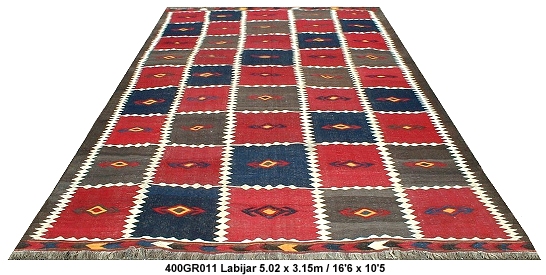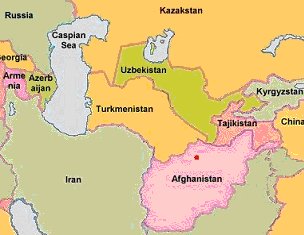

|
kilim-warehouse.com
|
 |
 |
Origin: Labijar
Northern Afghanistan
Woven: c. 1930
Size: 5.02 x 3.15 m 16'6" x 10'4"
Ref: 400GR011
SOLD
The two main designs produced by this group of villages in central Northern Afghanistan are both immediately recognizable. The smaller Labijar kilim design is reminiscent of interlocking "Christmas Trees" obviously accidental, since these are unknown in the area! The larger Labijars, of which this is an example, consist of a grid of square panels, generally alternating in rich madder and indigo, with a contrasting motif in its center. This motif is sometimes an hourglass or an "S" motif but most often is a double-headed arrow. Small white diamonds are used as grid lines and the total effect of the pattern, also found in Turkoman kilims, is thought to represent the metal box that the Koran is kept in, the 'bazubandi'. Although the actual significance of the double-headed arrow is not certain, it is generally thought to represent good luck, the "eye" formed by the arrow warding off any possible evil during the hunt. Many kilims of this type were to be found in prestigious government buildings at the time, because of their size and hard wearing nature (the warps were often twined with horse hair) they were used in the offices occupied by the then extremely important white collar civil servants - they could read and write! This is why ink stains can often be found on these kilims. Labijar means 'next to the small river' and refers to the Darya Safidi River close to Sherberghan, and the original weavers of these kilims, were the Ersari Turkomen living there. More recently the Labijar Uzbeks have copied the designs, although theirs are somewhat simpler. This example is an original Ersari Labijar, and is a very large kilim, even for its type.